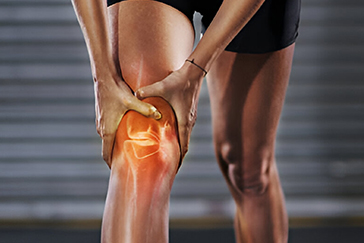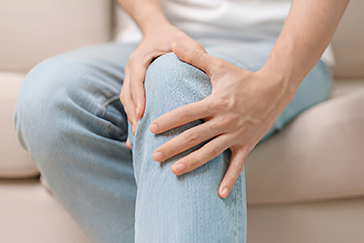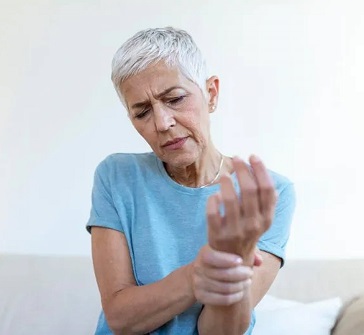 Book Appt.
Book Appt.
 Call Now
Call Now


Bursitis is a common yet often misunderstood musculoskeletal condition characterized by the inflammation of bursae, small sacs filled with synovial fluid located near joints. These bursae serve as cushions, reducing friction between bones, tendons, and muscles during movement. When inflamed, they can cause significant pain and discomfort, impacting daily activities. This article delves into the intricacies of bursitis, including its causes, symptoms, diagnosis, treatment, and prevention.
Causes and Risk Factors
Bursitis typically arises from repetitive motion or excessive pressure on a joint. Overuse or repetitive movements, such as those involved in sports or certain occupations, can lead to irritation and inflammation of the bursae. Additionally, sudden trauma, like a fall or direct blow, can trigger bursitis. Certain factors may increase the risk, including age (as bursae become less elastic with time), underlying inflammatory conditions like rheumatoid arthritis, and improper body mechanics.
Common Sites of Bursitis
Bursitis can occur in various parts of the body, with specific names indicating the affected area. Some common sites include:
Signs and Symptoms
The hallmark symptom of bursitis is localized pain, often exacerbated by movement or pressure on the affected area. Inflammation can lead to swelling, redness, and warmth around the joint. Stiffness and restricted range of motion may also be present. In chronic cases, the overlying skin may become thickened or develop corns or calluses.
Diagnosing Bursitis
A thorough medical history, physical examination, and possibly imaging studies are used to diagnose bursitis. The healthcare provider will assess symptoms, including their onset, location, and aggravating factors. Palpation of the affected area can reveal tenderness and swelling. In some cases, an ultrasound, MRI, or X-ray may be performed to rule out other potential causes of pain and confirm the presence of bursitis.
Treatment Approaches:
The management of bursitis aims to alleviate pain, reduce inflammation, and restore function. The following interventions are commonly employed:
Prevention
Taking proactive steps can help prevent bursitis or reduce its recurrence. These include:
In conclusion, bursitis is a common condition that can significantly impact an individual's quality of life. With proper diagnosis and a tailored treatment plan, most cases of bursitis can be effectively managed. Additionally, adopting preventive measures and seeking early intervention can help minimize the risk of developing this painful condition.
SHALBY Sanar International Hospitals provides extensive medical procedures backed up with our state-of-the-art technology and a team of highly qualified & experienced clinical experts.



Life Transformed: Mr. Blojah Felix Journey to Pain-Free Living | SHALBY Sanar

Pain-Free Living After 6 Years: Knee Replacement Success Story | Dr. Rohit Lamba

Bilateral Total Knee Replacement by Dr. Vikram Shah | SHALBY Sanar International Hospitals

Remarkable Recovery Story: Hip Replacement for Non-union Fracture

Incredible Recovery Story: Bilateral Knee Replacement Transformation

Knee Replacement Surgery by Dr. Rohit Lamba: 60-Year-Old's Remarkable Recovery

Renewed Hope: Successful Hip Replacement Surgery Transforms Iraqi Patient's Life

Exploring a Case of Revision Knee Replacement: Insights from Dr. Rohit Lamba

Triumphant Journey: Ms. Fatima, 69, Triumphs Over Revision Knee Replacement Surgery

Leaving the crutches behind – Riyaz, 43, gains confidence after a successful Hip Replacement Surgery

Transformative Total Knee Replacement Surgery: A New Lease on Life for 48-Year-Old Ramesh

Miraculous Recovery: 17-Year-Old Kenyan Overcomes Osteosarcoma with Mega Prosthesis Surgery

Mr. Omar Faruk's Remarkable Knee Recovery: ACL Reconstruction Success Story

Mrs. Vijay Luxmi's Remarkable Knee Replacement Journey

Umidjon, 36, from Uzbekistan shares his gratitude for a successful total hip replacement surgery

Ms. Mohsin from Iraq shares her gratitude for a successful Computer Navigated Total Knee Replacement

A Total Hip Replacement surgery gives Ms. Barry from Ghana, the ability to walk again.

Dr. Rohit Lamba talks about a successful Hip Replacement Surgery carried out on an Iraqi patient
Our doctors pen down their research findings and experiences from time to time. Their words provide deep insight into the latest techniques, technologies and other advancements in healthcare. It provides expert answers to all kinds of health questions for real-life issues.
VIEW ALL.png)
.png)



Since the day of its foundation, SHALBY Sanar International Hospitals is committed to provide comprehensive healthcare services. It regularly organizes awareness programs in its premises and encourages outdoor healthcare activities and camps with an intent to put focus on preventive healthcare.
VIEW ALL